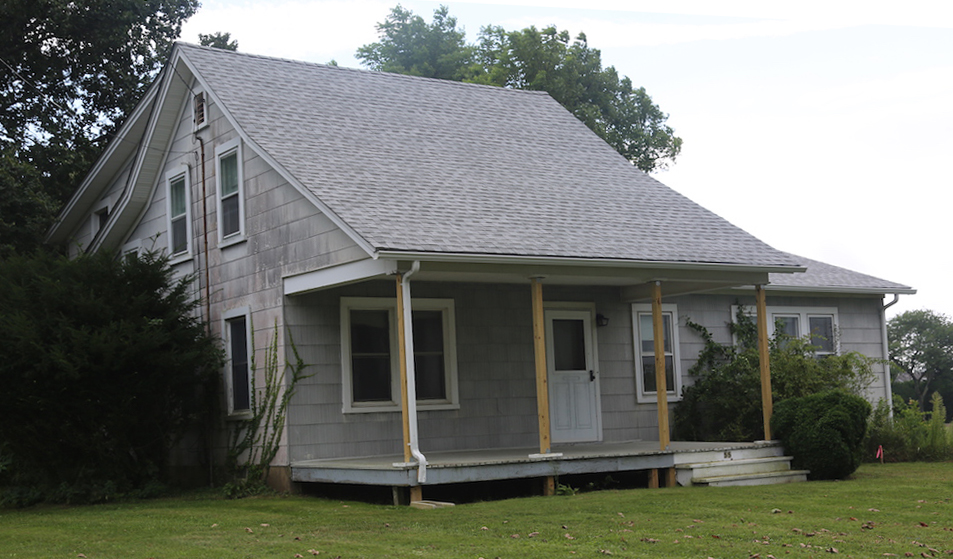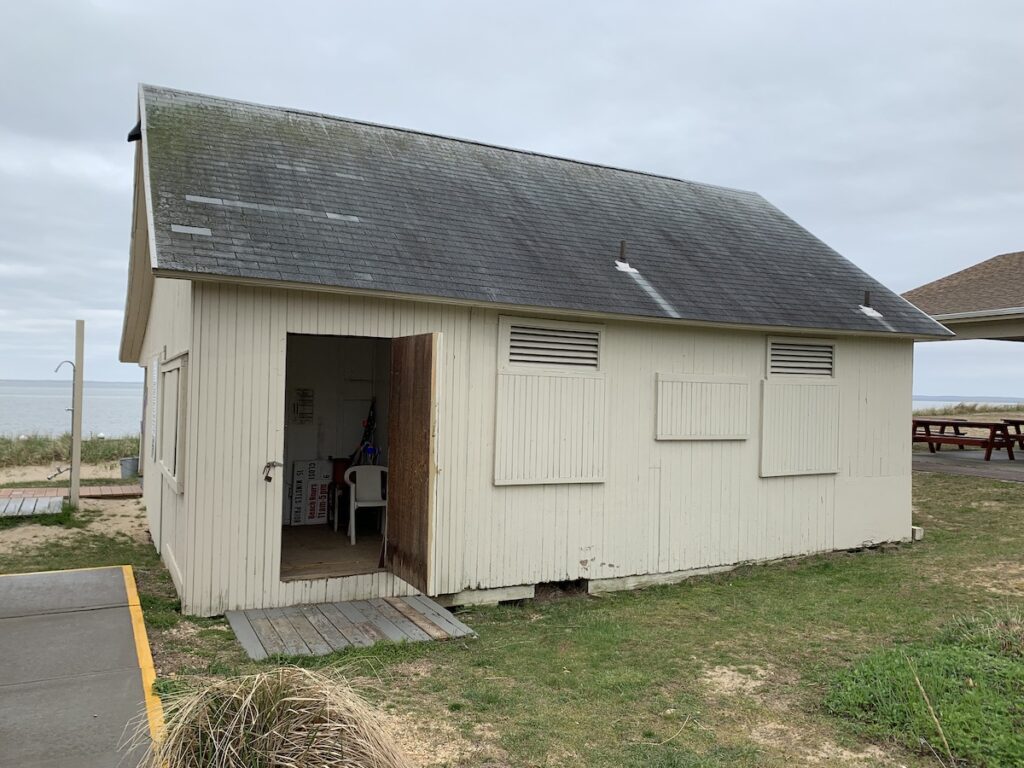Historic Preservation Commission denies proposed teardown of historic Orient home


A year-old application for the proposed “teardown” of an Orient home, which garnered much public attention due to its location in Orient’s historic district, was denied May 21 by members of Southold Town’s Historic Preservation Commission.
The 1,827-square-foot house at 675 Skippers Lane, just next to Poquatuck Park, has weathered its fair share of storms over time — but so have neighboring homes. Still, the structure, believed to have been built in 1918, was rife with asbestos, black mold, lead paint and powderpost beetle and termite damage. Applicants Louis Potters and Lenore Brancato proposed what they called a “teardown” of the house back in June 2018. They said they wanted to maintain the building’s architectural and historic integrity — to the extent that they could and to the extent that it would be sensible from a property value and safety standpoint.
Their proposal involved replacing the existing house with a 3,341-square-foot home — 100 square feet less than originally proposed, in response to meetings with HPC and much public comment. The applicants were also seeking a variance from the Zoning Board of Appeals to exceed maximum lot coverage. Almost a year later, HPC commissioners denied the applicants a Certificate of Appropriateness, leaving them with two options: They can either present their case to the Southold Town Board or submit new plans and a new application to the HPC.
Architect Peter Cook of Water Mill said at a November 2018 public hearing that “the house as it stands today has no architectural or craftsmanlike feature that one would consider historically significant or contributing or worthy of restoration or in-kind reproduction.” Mr. Cook said at that time that it would be impossible to make the house acceptable for a new family in today’s world without significant change.
“We should not be building the Orient of 1898 today,” he said then. “You should be building the Orient of today, today.”
More recently, Robert O’Brien, the applicants’ engineer, said at an April 10 public hearing that after reviewing the house, his only recommendation was demolition. Nothing, he said, was worth preserving.
“I just don’t see any value,” he said. “I do houses of that age all the time and they have value. This house has no value.”
To that end, John Henry of Orient called the proposed demolition a “travesty,” adding that it is ridiculous to be discussing whether a century-old home that is a landmark structure should be “demolished and replaced by a dwelling that is 70% larger.”
In a November 2018 letter to HPC chairman James Garretson, the board of trustees of Oysterponds Historical Society requested that the application be denied and noted that “675 Skippers Lane was designated as a landmark by the town of Southold in 2007.”
Charles Danes of Orient presented the HPC with a petition opposing the application that had been signed by 50 Orient residents. He also brought to the board a change.org petition that had 707 signatures opposing the demolition — another 50 of whom were Southold residents, he said.
At the April 10 hearing, Martin Finnegan, the applicants’ current attorney, said, “The applicants should not be burdened with maintaining an unsafe structure in its current form when it has been previously expanded and altered over time, stripping it of most, if not all, of its historic components.”
Indeed, expansions and additions have been made to the home over the years, before the HPC or the town’s historic district were even created, Mr. Garretson said at the meeting. Still, factors like the size of the planned house and chimney were concerning to commissioners.
“This was the first application that actually said the word ‘teardown,’ ” Mr. Garretson said at the April hearing. “And understand, all of us, when you’re a preservationist and you work really hard to preserve whatever you can, anybody mentions teardown, it’s a shock. It’s like a shock right up your back.”
Though Mr. Cook claimed to have rescaled plans for the new home to identically mimic the cottage that is present today, and though he argued that it appropriately meets the scale and architectural detail of neighboring homes, it was not enough to convince the commission.
The applicant’s attorney did not respond to multiple requests for comment.








